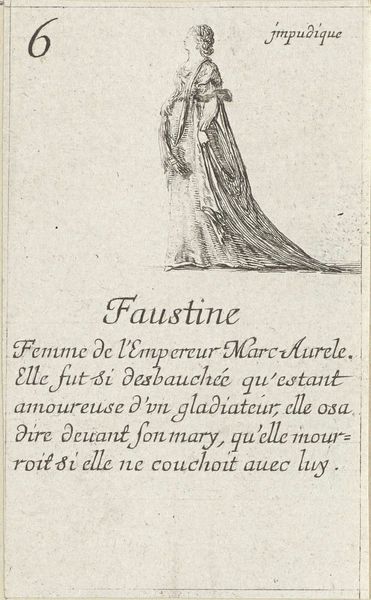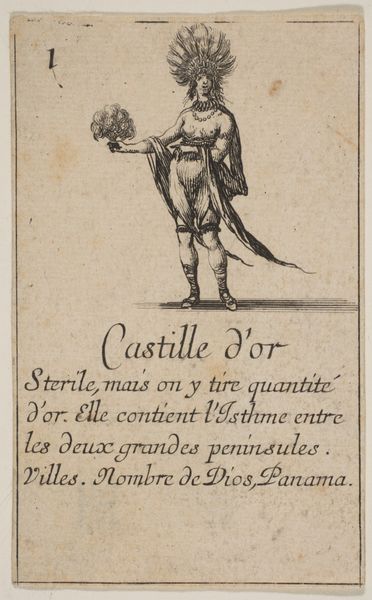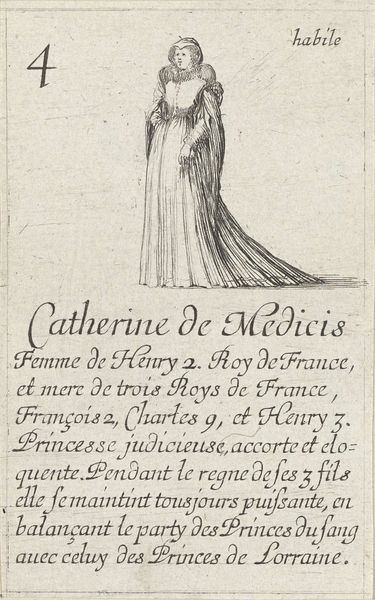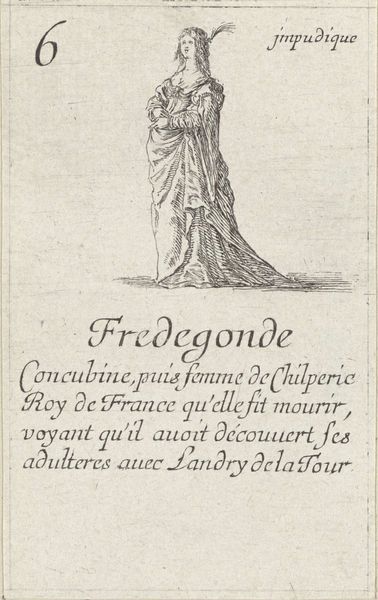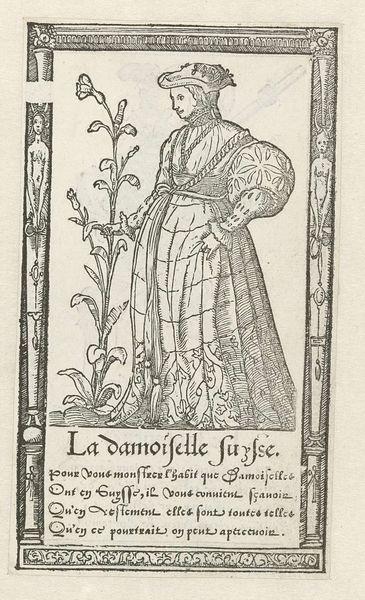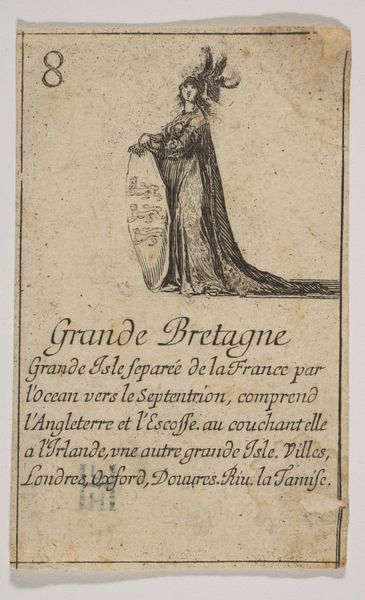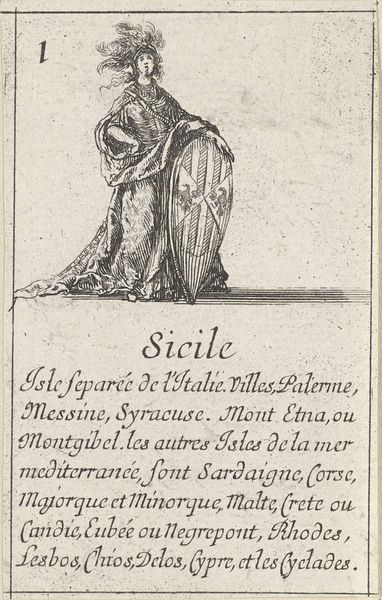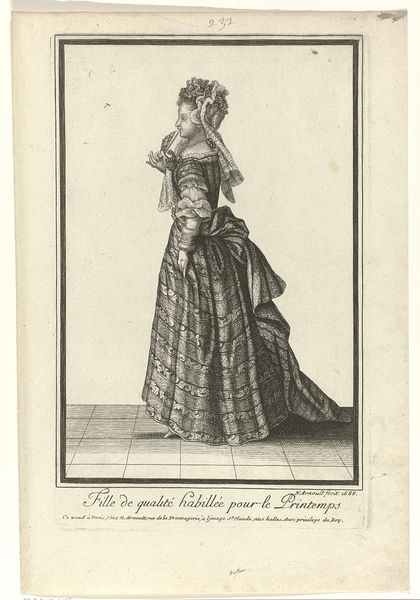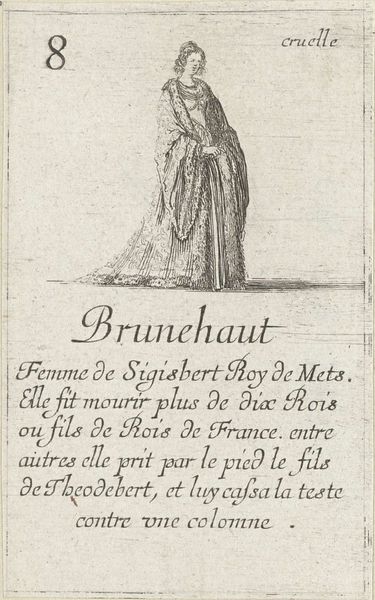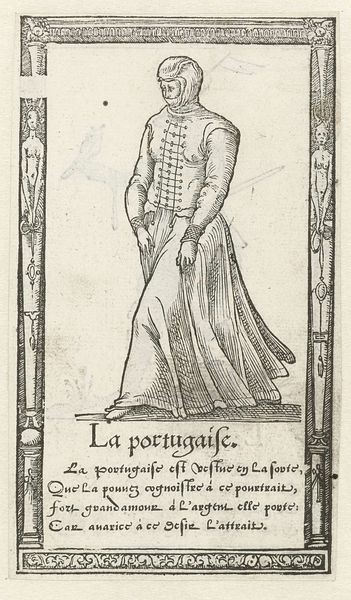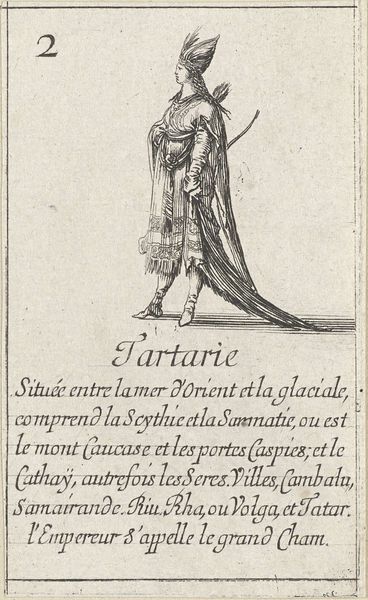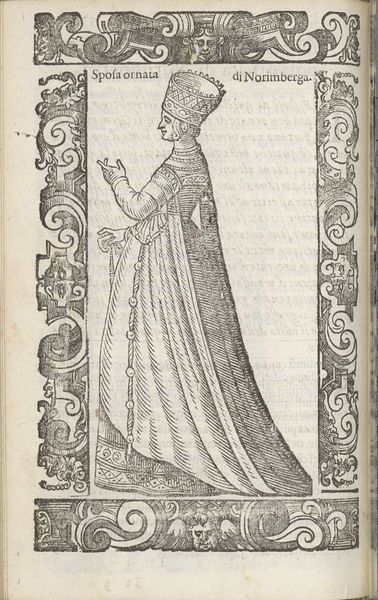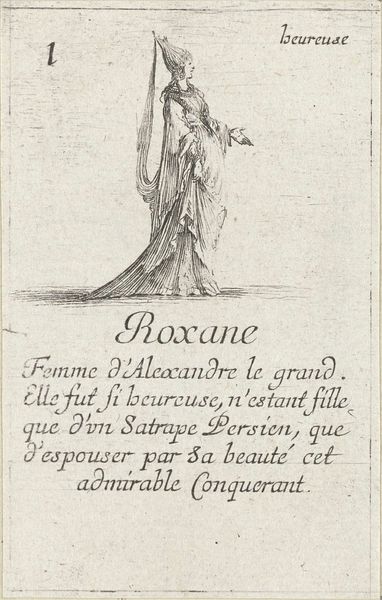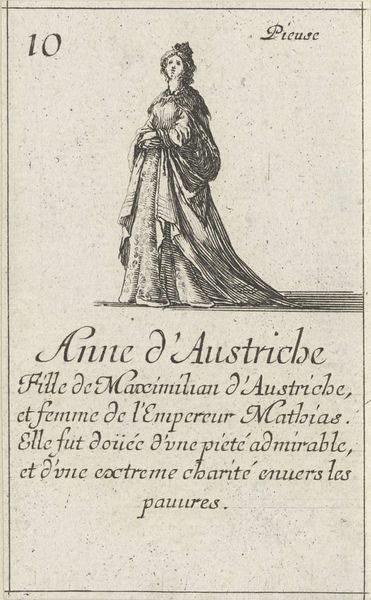
print, engraving
#
portrait
#
baroque
# print
#
history-painting
#
engraving
Dimensions: height 90 mm, width 55 mm
Copyright: Rijks Museum: Open Domain
Curator: The image before us, titled "Isabella I de Katholieke," was crafted between 1620 and 1664 by Stefano della Bella and held in the Rijksmuseum. This artwork uses the print medium of engraving. Editor: Its stark monochrome lends it a serious, almost austere quality, doesn’t it? The figure is so carefully rendered, but constrained within this rigid box, these firm, hard lines. Curator: Exactly. The etching would have involved applying a ground to a metal plate, drawing through the ground, and then acid-etching the lines, layering material interventions and decisions at every step. Considering the social context, these prints often circulated among the educated elite. Their ability to produce and interpret them reinforced class distinctions, controlling who saw and benefited from the image. Editor: True, and the crisp lines articulate texture effectively; you can feel the weight of that fabric and almost hear the rustling of the queen’s gown. How the light falls is clearly planned to add a sort of majesty, and how those parallel lines, laid so precisely, build areas of shadow... Curator: Right, the repetitive, almost mechanical act of engraving highlights labor as intrinsic to both process and product. Notice how even the inscribed text serves a decorative as well as informative purpose. The very act of inscribing those words is a labor of dedication. These techniques offered methods of disseminating controlled imagery and narrative tied to empire, and these printed images were commodities produced to solidify power structures. Editor: Looking closely, though, the figure's slightly stiff posture suggests perhaps constraint—within the political system, but even within the very lines that compose her portrait. Is it simply capturing likeness or something more coded, an acknowledgement of limits even within power? Curator: These historical paintings always negotiate a difficult space. The very accessibility afforded through its engraving amplifies its role within society and markets of taste. It speaks volumes about labor, commodity, and circulation and challenges how we see value ascribed to the visual culture of the period. Editor: Interesting perspective. It enriches our understanding of the choices the artist might have been weighing during production. The way those aesthetic considerations were informed by, and simultaneously informed, larger social conditions is a revelation.
Comments
No comments
Be the first to comment and join the conversation on the ultimate creative platform.
